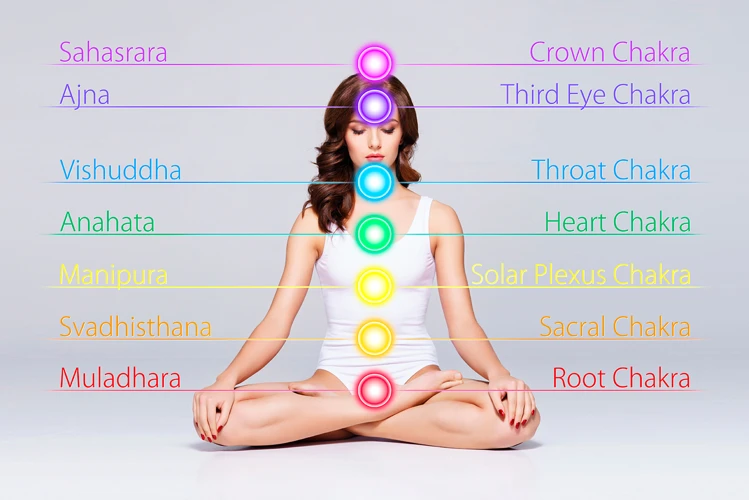Have you ever felt out of balance or disconnected from yourself? Maybe you’ve experienced physical ailments, emotional turbulence, or a sense of detachment from the world around you. It’s possible that this could be due to imbalances in your chakras, the energy centers found throughout your body. Chakras have been studied for thousands of years in Eastern traditions, and are believed to affect our physical, emotional, and spiritual well-being. With the help of meditation and breathwork techniques, you can learn to balance your chakras and restore harmony to your body and mind. In this article, we’ll explore what chakras are, their benefits, and various techniques you can use to stimulate and balance them.
What Are Chakras?
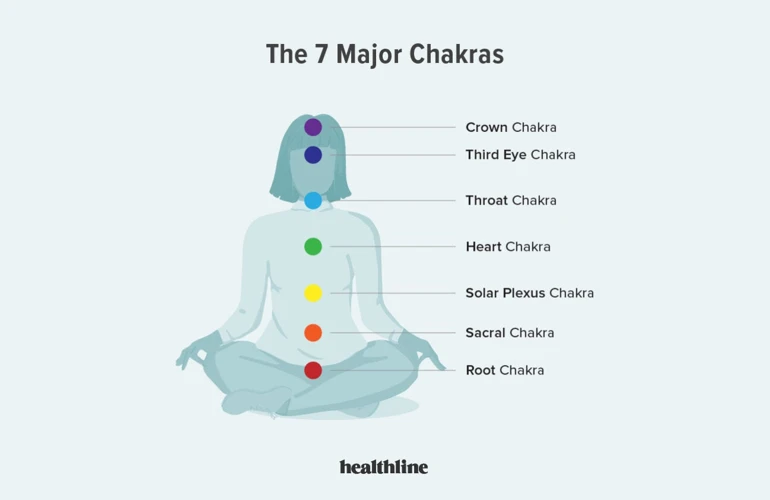
The concept of chakras can seem abstract and mysterious to those who are unfamiliar with it. Some may even wonder if chakras truly exist or if they are simply a mythical construct. However, delving into the history and practice of chakras reveals a fascinating system of spiritual knowledge that has been studied and utilized for centuries. So, what exactly are chakras and why are they important? Let’s explore this topic together.
Overview
Chakras are the centers of energy in our bodies that play a crucial role in our physical, emotional, and spiritual well-being. There are seven main chakras, each located in a specific area of the body and associated with a different color, element, and purpose. Here is an overview of the seven chakras:
| Chakra | Location | Color | Element | Purpose |
|---|---|---|---|---|
| Root Chakra | Base of the spine | Red | Earth | Grounding, survival, stability |
| Sacral Chakra | Lower abdomen | Orange | Water | Creativity, sexuality, emotions |
| Solar Plexus Chakra | Upper abdomen | Yellow | Fire | Personal power, self-esteem, confidence |
| Heart Chakra | Center of chest | Green | Air | Love, compassion, connection |
| Throat Chakra | Throat | Blue | Sound | Communication, self-expression, authenticity |
| Third Eye Chakra | Forehead, between eyebrows | Indigo | Light | Intuition, perception, spirituality |
| Crown Chakra | Top of head | Purple or white | Thought | Connection to higher self, divine consciousness |
Understanding the basics of the chakras can help you target areas of imbalance and bring about greater harmony and balance in your life. By working with meditation and breathwork, you can help to activate and balance each chakra, leading to numerous physical, emotional, and spiritual benefits.
How Chakras Affect the Body
The chakras are believed to affect the body in different ways, influencing both physical and emotional well-being. Each chakra is associated with specific organs, glands, and bodily functions. Here is a breakdown of how each chakra affects the body:
| Chakra | Location | Associated Body Parts and Functions |
|---|---|---|
| Root chakra | Base of the spine | Feet, legs, skeleton, elimination system, adrenal glands |
| Sacral chakra | Lower abdomen | Reproductive organs, urinary system, lower intestines, spleen, ovaries, testes |
| Solar plexus chakra | Upper abdomen | Stomach, liver, gallbladder, pancreas, small intestine, metabolism |
| Heart chakra | Center of chest | Heart, lungs, chest, arms, hands, thymus gland, immune system, circulation |
| Throat chakra | Throat area | Throat, neck, jaw, ears, mouth, vocal cords, thyroid gland, communication |
| Third eye chakra | Center of forehead | Eyes, brain, neurological system, ears, pituitary gland, intuition, imagination |
| Crown chakra | Top of the head | Brain, nervous system, pineal gland, spirituality, connection to the universe |
When a chakra is blocked or imbalanced, the corresponding body parts and functions may be affected, leading to physical or emotional issues. Balancing the chakras through meditation and breathwork can help bring them back into alignment and promote overall health and wellbeing.
The Seven Chakras
The human body has seven major chakras, each with its unique characteristics and significance. Understanding these chakras is crucial in balancing them effectively.
The first chakra, known as the Root Chakra, is located at the base of the spine. It represents our foundation and is associated with grounding, safety, and security. A strong Root Chakra is essential for physical strength and stability.
The second chakra is known as the Sacral Chakra, located in the lower abdomen. This chakra is associated with our emotions, creativity, and sensuality. A balanced Sacral Chakra can enhance our ability to receive pleasure and develop healthy self-esteem.
The third chakra is the Solar Plexus Chakra, located in the upper abdomen. It is associated with our self-esteem, confidence, and personal power. Maintaining a balanced Solar Plexus Chakra can enhance our decision-making abilities and boost our self-confidence.
The fourth chakra is known as the Heart Chakra, located in the center of the chest. It represents unconditional love, compassion, and emotional balance. A healthy Heart Chakra can help us develop healthy relationships and feel more connected to others.
The fifth chakra is the Throat Chakra, located in the throat area. It is associated with communication, self-expression, and authenticity. Balancing this chakra can help us to communicate more effectively and express our true selves.
The sixth chakra is the Third Eye Chakra, located in the center of the forehead. It is associated with intuition, wisdom, and spiritual insight. A balanced Third Eye Chakra can enhance our ability to see beyond the physical realm and gain greater clarity and understanding.
Finally, the seventh chakra is the Crown Chakra, located at the top of the head. It represents our connection to the divine and our spiritual nature. A balanced Crown Chakra can enhance our spiritual growth and help us feel more connected to the universe.
Understanding each of these chakras and their unique characteristics is essential in developing an effective chakra balancing practice. By focusing on each chakra individually and working to balance them as a whole, we can promote overall physical, emotional, and spiritual wellbeing.
The Benefits of Balancing Your Chakras
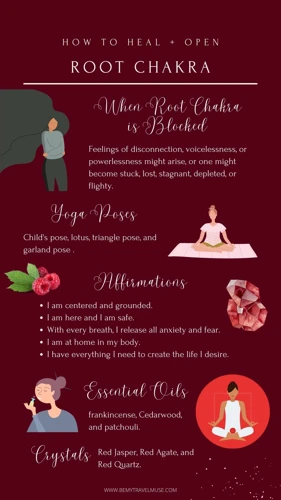
As we delve deeper into the world of chakras, the question of “why” becomes ever more important. What are the benefits of balancing your chakras? Well, the answer is multifaceted, as chakra balancing can have a positive impact on various aspects of our lives. From physical health to emotional well-being and spiritual growth, aligning your chakras can help you achieve a more balanced and harmonious life. So, let’s explore the specific benefits of chakra balancing and how it can enhance your overall health and wellness.
Physical Benefits
Balancing your chakras with meditation and breathwork can have a positive impact on both your physical and emotional well-being. Here are some physical benefits you may experience:
| Physical Benefit | Description |
|---|---|
| Increased Energy Levels | Maintaining balanced chakras can help you feel more energized throughout the day. When energy flows freely through your chakras, it can help combat fatigue and reduce lethargy. |
| Better Sleep | Chakra balancing can also aid in achieving better quality sleep. When the chakras are balanced, it can promote relaxation and reduce stress, which can lead to more restful nights. |
| Improved Physical Health | Each chakra is associated with specific areas of the body, and when they are balanced, it can help promote overall physical health. For example, a balanced root chakra is associated with strong bones and healthy cellular function, while a balanced heart chakra is associated with a healthy circulatory system and balanced blood pressure. |
| Reduced Pain and Inflammation | Practicing chakra balancing techniques can also help reduce pain and inflammation in the body. When chakras are blocked or imbalanced, it can lead to physical discomfort. Balancing the chakras can help release tension and stress, which can aid in reducing pain and inflammation caused by physical ailments. |
| Enhanced Immune System | Chakra balancing can also help boost your immune system. When your chakras are balanced and energy is flowing freely, it can enhance the body’s natural defense system and improve overall health. |
By regularly practicing chakra balancing techniques like meditation and breathwork, you can experience these physical benefits and improve your overall quality of life.
Emotional Benefits
Balancing your chakras not only has physical benefits, but it can also have a positive impact on your emotional well-being. Here are some of the emotional benefits you can experience when your chakras are balanced:
- Reduced stress and anxiety: Balancing your chakras can help reduce stress and anxiety levels. By opening your heart chakra and promoting the flow of energy throughout your body, you can experience a greater sense of peace and calm within yourself.
- Increased self-awareness: As you balance your chakras, you become more attuned to the energy within your body. This awareness can help you better understand your emotions and how to work through any negative feelings that arise.
- Improved relationships: When your chakras are balanced, it can help you connect more deeply with others. By opening your throat chakra, you can communicate more effectively and express yourself more authentically, leading to more meaningful and fulfilling relationships.
- Enhanced creativity: Balancing your sacral chakra can help awaken your creative potential. By tapping into this energy center, you may experience a greater sense of inspiration and creative flow.
- Greater self-confidence: Balancing your solar plexus chakra can help boost your self-esteem and self-confidence. By fostering a sense of inner strength and personal power, you can approach any situation with greater courage and conviction.
These emotional benefits are just some of the many reasons why it’s important to strive for balance in your chakras. By paying attention to the energy centers in your body and working to promote their healthy flow, you can experience greater emotional stability and overall well-being.
Spiritual Benefits
Balancing your chakras through meditation and breathwork can not only provide physical and emotional benefits but also spiritual benefits. Here are some spiritual benefits of chakra balancing:
- Connection with Higher Self: When your chakras are balanced, you may feel a stronger connection with your higher self or inner being. You may feel more aware of your intuition and have a deeper understanding of your purpose in life.
- Expanded Consciousness: By balancing your chakras, you may experience a heightened sense of awareness and a greater understanding of the world around you. You may feel more connected to nature and the universe as a whole.
- Transcendence: With balanced chakras, you may feel a sense of spiritual transcendence. This can occur in the form of mystical experiences, feelings of oneness with the universe, and a sense of peace and contentment.
- Clearer Perception: Chakra balancing can help you to see things more clearly and from a different perspective. It can give you a deeper understanding of your place in the world and help you to make better decisions.
- Enhanced Spirituality: When your chakras are in balance, you may experience a greater sense of spirituality. You may feel more connected to a higher power or greater force, and feel a sense of gratitude and interconnectedness with everything around you.
Spiritual benefits of chakra balancing can have a profound impact on your life, helping you to feel more connected, aware, and at peace. By incorporating regular chakra balancing practices into your routine, you can enhance your spirituality and experience the benefits that come with a balanced and harmonious energy system.
Meditation for Chakra Balancing
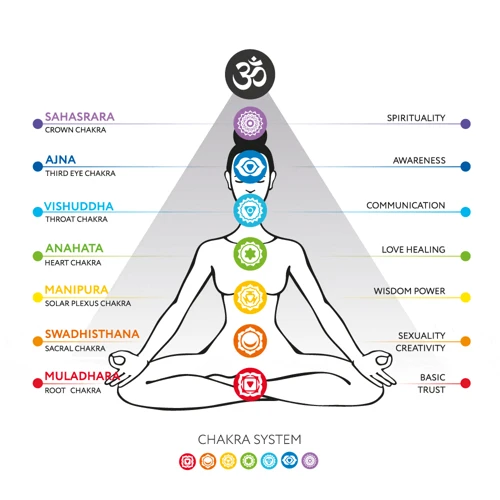
When it comes to balancing your chakras, one of the most effective tools is meditation. Through meditation, you can connect with your inner self and bring awareness to the energy centers within your body. By doing so, you allow for the free flow of energy throughout these centers, promoting physical, emotional, and spiritual well-being. In this section, we will explore different meditation techniques that you can use to balance your chakras and achieve a deeper sense of inner peace and harmony.
Mindfulness Meditation
Mindfulness meditation is a powerful technique for balancing your chakras. It involves focusing your attention on the present moment and observing your thoughts and feelings without judgement. This technique can help you become more aware of your body and your energy flow, which can be helpful for identifying and unblocking any chakra imbalances.
One way to practice mindfulness meditation is by using a simple breathing exercise. Find a quiet place to sit comfortably and close your eyes. Take a deep breath in through your nose, feeling your chest and belly expand. Hold for a moment, and then slowly exhale through your mouth, feeling your body release any tension or stress. Repeat this process, focusing your attention solely on your breath.
Another technique for mindfulness meditation is body scanning, which involves bringing attention to each part of your body and noticing any sensations, such as warmth or tingling. Start at the top of your head and gradually work your way down towards your toes. As you bring your attention to each part of your body, try to release any tension or tightness you may be holding.
Incorporating mindfulness meditation into your daily routine can help you feel more grounded and connected, leading to a greater sense of overall well-being. Remember to be gentle with yourself and remain patient as you work towards balancing your chakras.
| Advantages | Disadvantages |
|---|---|
| Reduce stress and anxiety | May take time to see results |
| Improve focus and concentration | Requires consistent practice |
| Enhance self-awareness | May be challenging to remain present in the moment |
| Promote emotional regulation | Difficult for some to sit still for extended periods |
Loving-Kindness Meditation
Loving-kindness meditation, also known as metta meditation, is a type of meditation that focuses on cultivating love and compassion towards oneself and others. This practice has been shown to have numerous emotional and psychological benefits. Here’s a breakdown of how to do loving-kindness meditation:
| Step | Description |
|---|---|
| 1 | Find a quiet space where you can sit comfortably without distractions. |
| 2 | Begin by sitting comfortably with your eyes closed, taking a few deep breaths, and centering yourself. |
| 3 | Focus your attention on your heart center and visualize a bright, warm light emanating from it. |
| 4 |
Repeat the following phrases to yourself, making sure to direct them towards yourself first and then towards others:
|
| 5 | Once you have repeated the phrases to yourself, imagine a loved one in your mind’s eye and repeat the phrases to them. |
| 6 | Next, bring to mind someone you feel neutral towards (not particularly close or distant) and repeat the phrases to them. |
| 7 | Finally, visualize someone you have difficulty with and send them love and compassion by repeating the phrases to them. |
| 8 | Take a few deep breaths and return to your heart center. Open your eyes when you are ready. |
Practicing loving-kindness meditation regularly can lead to increased feelings of happiness, compassion, and well-being. It can also improve relationships and decrease feelings of stress and anxiety. Give it a try and see how it can benefit you!
Mantra Meditation
Mantra meditation is a technique that involves chanting a specific phrase or word to focus the mind and bring about relaxation. It is beneficial for chakra balancing as it helps to activate and balance the energy centers in the body. Mantras are powerful tools for healing and transformation.
To practice mantra meditation for chakra balancing, you first need to choose a word or phrase that resonates with you. This can be a word that represents the energy of a particular chakra, such as “love” for the heart chakra or “om” for the crown chakra. Once you have chosen a mantra, sit comfortably with your eyes closed and repeat the mantra silently in your mind, focusing on the sound and vibration.
As you chant the mantra, you will begin to feel a sense of calmness and focus. The repetition of the sound will help to quiet the mind and bring you into a meditative state. This state of relaxation and focus allows for deeper awareness and connection to the body’s energy centers.
You can use this technique to focus on each of the seven chakras individually or for an overall chakra balancing practice. Below are some mantras that you can use for each chakra:
| Chakra | Mantra |
|---|---|
| Root | “I am grounded and secure.” |
| Sacral | “I embrace pleasure and joy in my life.” |
| Solar Plexus | “I am powerful and confident in my actions.” |
| Heart | “I give and receive love openly and easily.” |
| Throat | “I speak my truth with clarity and confidence.” |
| Third Eye | “I trust my intuition and inner guidance.” |
| Crown | “I am connected to the divine and am one with all.” |
Remember that mantra meditation takes practice and patience. It is normal for the mind to wander during meditation, and it is important to gently bring your focus back to the mantra. The key is to let go of any judgment or expectation and simply observe the sensations and feelings that arise. Give yourself permission to relax and enjoy the practice.
Incorporating mantra meditation into your chakra balancing practice can help to bring clarity, relaxation, and balance to your mind, body, and spirit.
Breathwork for Chakra Balancing
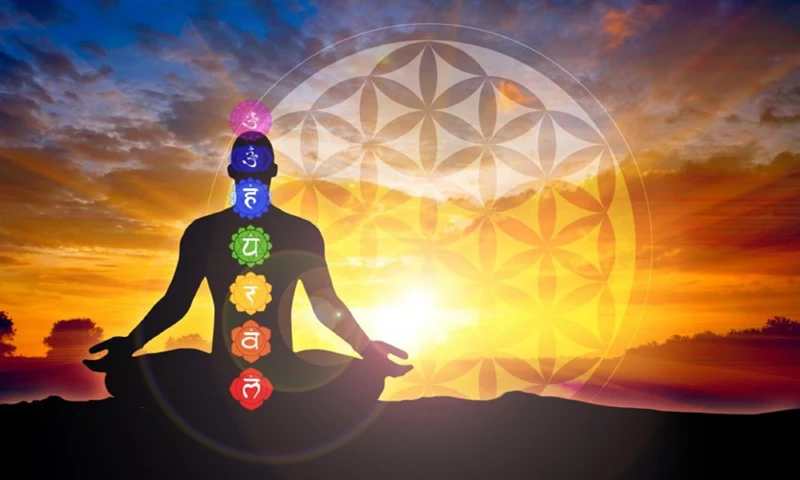
When it comes to balancing your chakras, the power of the breath should not be underestimated. Conscious breathing techniques, also known as breathwork, have been used for centuries as a way to harmonize the mind, body, and spirit. By intentionally directing the flow of breath, you can stimulate and balance each of the seven chakras, promoting overall wellbeing and inner peace. In this section, we’ll explore various breathwork techniques that can be used for balancing your chakras, so you can start to feel more centered and grounded in your everyday life.
Pranayama Breathing Techniques
Pranayama is a Sanskrit term that means “controlled breathing.” This technique involves regulating your breath to help balance your body’s energy flow and improve your overall well-being. Here are some examples of pranayama breathing techniques that you can use to balance your chakras:
| Technique | Description |
|---|---|
| Ujjayi | Constrict the back of your throat while you inhale and exhale through your nose. This results in a slightly audible breath, which can help to calm your mind and promote mental clarity. |
| Kapalabhati | Take a deep inhale, then forcefully exhale through your nose while contracting your abdominal muscles. This technique is believed to help cleanse your body and energize your chakras. |
| Bhastrika | Take deep, forceful inhales and exhales through your nose while rapidly contracting and relaxing your abdominal muscles. This technique can help to invigorate your body and improve your overall energy levels. |
| Nadi Shodhana | Place your right thumb over your right nostril and inhale through your left nostril, then close your left nostril with your ring finger and exhale through your right nostril. Inhale through your right nostril, then close it with your thumb and exhale through your left nostril. This technique can help to balance the energy flow in your body. |
| Sheetali | Curl your tongue and inhale through it as if you’re drinking through a straw. Then exhale out through your nose. This technique can help to cool your body and calm your mind. |
It is recommended that you learn these techniques under the guidance of a qualified instructor to ensure that you are practicing them correctly and safely. It is also important to listen to your body and avoid pushing yourself too hard. By incorporating pranayama techniques into your chakra balancing practice, you can help to improve your overall well-being and promote a sense of inner peace and balance.
Alternate Nostril Breathing
One breathwork technique that can aid in chakra balancing is alternate nostril breathing. This technique is also known as Nadi Shodhana or “channel cleansing” breath. It involves breathing through one nostril at a time while closing the other nostril with the thumb and the ring finger. This technique is widely used in Yoga and is believed to balance the two hemispheres of the brain and purify the energy channels in the body.
To perform alternate nostril breathing, follow the steps outlined in the table below:
| Step | Description |
| Step 1 | Find a comfortable seated position with your back straight and your eyes closed. Rest your left hand on your left knee with your palm facing up. |
| Step 2 | Take a deep breath in through both nostrils. Use your right thumb to close your right nostril and exhale through your left nostril. |
| Step 3 | Inhale through your left nostril while keeping your right nostril closed with your thumb. |
| Step 4 | Release your right nostril and close your left nostril with your ring finger. Exhale through your right nostril. |
| Step 5 | Inhale through your right nostril while keeping your left nostril closed. |
| Step 6 | Release your left nostril and close your right nostril. Exhale through your left nostril. |
| Step 7 | This completes one round. Repeat for several rounds, alternating between the nostrils. |
Alternate nostril breathing can help to balance the energy flow in your body and promote a sense of calm. It is a great technique to practice before meditation or as a standalone practice to help reduce stress and anxiety.
Belly Breathing
One effective breathwork technique for balancing your chakras is belly breathing. This technique is also known as diaphragmatic breathing and can help you to release tension and stress from your body. Here’s how to practice belly breathing:
| Step 1: | Find a comfortable seated position with your back straight and your feet on the ground. |
| Step 2: | Place one hand on your chest and the other hand on your belly. |
| Step 3: | Inhale deeply through your nose and feel your belly expand as you breathe in. |
| Step 4: | Exhale slowly through your mouth and feel your belly contract as you breathe out. |
| Step 5: | Repeat this cycle of inhaling and exhaling for several minutes, focusing on the sensation of your breath moving in and out of your body. |
It’s important to note that belly breathing can take some practice to master. You may find that at first, you’re not able to fully expand your belly on the inhale or fully contract it on the exhale. This is normal, and with regular practice, you’ll be able to deepen your breath and fully engage your diaphragm.
One way to make belly breathing more effective is to visualize the breath moving in and out of your body along the path of your chakras. As you inhale, imagine the breath moving down through your crown chakra and down to your root chakra. As you exhale, visualize the breath moving back up through your chakras and out through your crown.
Incorporating belly breathing into your daily chakra balancing practice can help you to release tension and stress from your body, and bring balance to your energy centers.
Combining Meditation and Breathwork
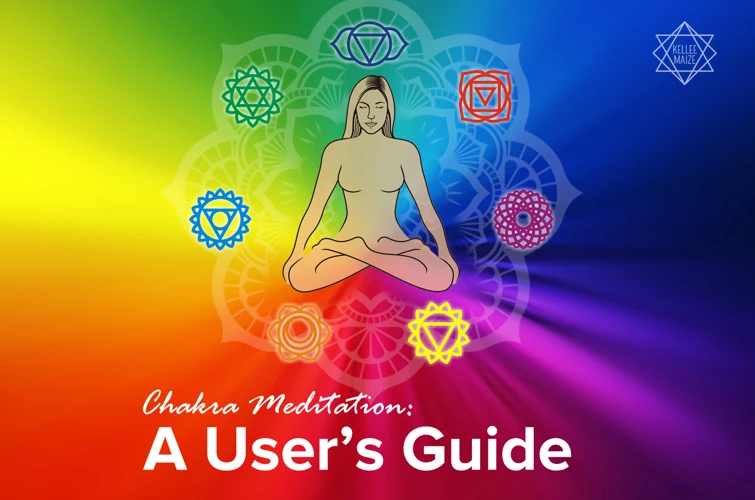
Are you ready to take your chakra balancing practice to the next level? By combining meditation and breathwork, you can create a powerful tool for achieving balance and harmony in your body and mind. In this section, we will explore various techniques for combining these practices, including using specific breathwork techniques during meditation and syncing your breath with a mantra. With these tools, you can deepen your awareness of your chakras and bring yourself closer to a state of balance and inner peace. Let’s explore the possibilities of combining meditation and breathwork for chakra balancing.
Techniques for Combining
Combining meditation and breathwork is an effective way to balance your chakras. There are different techniques you can use to combine these practices. Here are some examples:
| Technique | Description |
|---|---|
| Focused Breathing | Breathe deeply and focus on the sensation of the breath moving in and out of the body. Visualize the breath moving through each chakra, starting from the root and moving up to the crown. |
| Chakra-Specific Mantras | Choose a mantra specific to each chakra and repeat it during meditation while focusing on the corresponding part of the body. For example, the mantra “Lam” can be used to balance the root chakra, while the mantra “Om” is effective for the crown chakra. |
| Visualization | Imagery is a powerful tool to aid in meditation. Visualize each chakra as a specific color and focus on that color during the meditation. This can help activate and balance the chakras. |
| Breath Retention | During pranayama breathing, hold the breath for a few seconds while focusing on a specific chakra. This can help activate and balance that chakra. |
These techniques can be used in combination with different types of meditation and breathwork practices. Experiment with different combinations to find what works best for you. Remember to always listen to your body and adjust your practice as needed.
Example Practice
One example of a chakra balancing practice that combines meditation and breathwork involves focusing on each chakra one by one. Begin by finding a comfortable seated position in a quiet space. Follow these steps:
| Step | Description |
|---|---|
| 1 | Set the intention: Take a deep breath and set the intention to balance your chakras. |
| 2 | Begin with the root chakra: Visualize a red light at the base of your spine, and imagine it growing brighter with each breath in. As you exhale, imagine any negativity, tension, or anxiety leaving your body. |
| 3 | Move to the sacral chakra: Visualize an orange light in your lower abdomen, and imagine it growing brighter with each inhale. As you exhale, imagine any feelings of guilt, shame, or jealousy leaving your body. |
| 4 | Focus on the solar plexus chakra: Visualize a yellow light in your upper abdomen, and imagine it growing brighter with each inhale. As you exhale, imagine any self-doubt, fear, or confusion leaving your body. |
| 5 | Move to the heart chakra: Visualize a green light in the center of your chest, and imagine it growing brighter with each inhale. As you exhale, imagine any feelings of anger, resentment, or grief leaving your body. |
| 6 | Focus on the throat chakra: Visualize a blue light in your throat, and imagine it growing brighter with each inhale. As you exhale, imagine any feelings of self-doubt, frustration, or anger leaving your body. |
| 7 | Move to the third eye chakra: Visualize a purple light in the center of your forehead, and imagine it growing brighter with each inhale. As you exhale, imagine any feelings of confusion, illusion, or indecisiveness leaving your body. |
| 8 | End with the crown chakra: Visualize a white or violet light at the top of your head, and imagine it growing brighter with each inhale. As you exhale, imagine any feelings of disconnection, loneliness, or despair leaving your body. |
| 9 | Complete the practice: Take a few deep breaths, and visualize all of your chakras spinning in harmony. When you’re ready, slowly open your eyes and take a few more deep breaths before standing up. |
Remember to be patient with yourself as you practice chakra balancing. It can take time to achieve the desired results, but with consistent effort, you’ll likely start to notice improvements in your overall well-being.
Tips for Successful Chakra Balancing Practice
If you’re starting your chakra balancing journey, it’s important to know that consistency and patience are key. While meditation and breathwork practices can have immediate benefits, it may take time to fully experience the effects of balancing your chakras. In this section, we’ll discuss some tips to help you have a successful chakra balancing practice. Emphasizing finding a quiet space, utilizing guided meditations, and being patient with yourself, these tips can help ensure that you are getting the most out of your chakra balancing practice. So, let’s dive in and explore these tips further.
Find a Quiet Space
When it comes to balancing your chakras with meditation and breathwork, it is important to find a quiet space to practice in. This space should be free from distractions and noises that could break your focus and hinder your progress.
To help you create the perfect environment for your chakra balancing practice, here are some tips to keep in mind:
| Tip #1: | Find a peaceful location where you won’t be disturbed. This could be a quiet room in your home or a calm spot in nature. |
| Tip #2: | Eliminate any possible distractions. Turn off your phone, computer, or any other devices that could potentially interrupt your meditation. |
| Tip #3: | Wear comfortable clothing. You want to be relaxed and comfortable during your practice, so choose clothing that allows you to move and breathe freely. |
| Tip #4: | Create a calming atmosphere. You can do this by lighting candles, burning incense, or playing soothing music. |
| Tip #5: | Use props to support your body. If you find it hard to sit on the floor, you can use meditation cushions or a yoga mat to make yourself more comfortable. |
By finding a quiet space to practice in, you can create the ideal environment for your chakra balancing practice. This will help you to focus more deeply on your meditation and breathwork, and experience the full benefits of this powerful healing practice. Remember to use these tips to create a space that truly supports your mind, body, and spirit.
Use Guided Meditations
One helpful tip for successful chakra balancing practice is to utilize guided meditations. Guided meditations can assist in focusing the mind and keeping it on track throughout the meditation, which can be especially helpful for beginners or for those who struggle with maintaining focus.
There are many guided meditations specifically designed for chakra balancing available for free online or through meditation apps. These meditations often guide the listener through visualizations and affirmations aimed at releasing blockages in each chakra. Using guided meditations can allow for deeper relaxation and a more profound meditation experience.
Additionally, using guided meditations can help in identifying areas of the body where blockages may be present, as the meditation will highlight which chakra is being worked on. This awareness can then be carried into other chakra balancing techniques such as breathwork and mindfulness meditation.
When selecting a guided meditation, it’s important to choose one that resonates with you and your specific needs. Some may focus on specific chakras, while others may provide a more holistic approach to chakra balancing. Experimenting with different guided meditations can help in finding what works best for you and your unique needs.
Incorporating guided meditations into your chakra balancing practice can enhance the effectiveness of meditation and assist in identifying and releasing blockages in each chakra.
Be Patient with Yourself
When it comes to balancing your chakras through meditation and breathwork, it is important to remember that it is not a quick fix or a one-time practice. It takes patience, persistence, and a willingness to do the work. Here are some tips to help you be patient with yourself as you embark on this journey of chakra balancing:
- Set realistic expectations: Understand that this is a process that takes time and effort. Don’t expect to see results overnight or even in just a few sessions.
- Don’t judge yourself: As you begin to explore your chakras and work on balancing them, you may become aware of areas where you feel blocked or stuck. It’s important to remember not to judge yourself for these feelings or experiences.
- Practice self-compassion: Balancing your chakras can be challenging at times. Remember to treat yourself with kindness and compassion throughout the process.
- Embrace mistakes: You may not get it right the first time, and that’s okay. Embrace the mistakes you make along the way as opportunities for growth and learning.
- Stay committed: Make a commitment to yourself to continue this practice, even when it gets difficult or you don’t see immediate results. Consistency is key when it comes to chakra balancing.
- Celebrate small victories: As you make progress in your chakra balancing journey, celebrate the small victories along the way. Every step forward counts.
Remember to be patient with yourself as you embark on this journey. With dedication, persistence, and a willingness to work through any challenges that come your way, you can experience the benefits of a balanced chakra system.
Conclusion
In conclusion, balancing your chakras through meditation and breathwork can offer a wealth of benefits for your physical, emotional, and spiritual health. It is important to understand the seven chakras and how they affect the body in order to identify areas that need balancing. Mindfulness meditation, loving-kindness meditation, and mantra meditation are all effective methods for chakra balancing, and combining them with breathwork can enhance their effects.
To have a successful chakra balancing practice, it is essential to find a quiet space where you can concentrate without distractions. Guided meditations can be helpful for beginners, and it is important to be patient with yourself and not expect immediate results. Consistency is key with any practice, so making this a regular habit can lead to significant improvements in your wellbeing.
Remember to listen to your body and focus on what feels right for you. Balancing your chakras is not a one-size-fits-all solution, so experimentation may be necessary to find the methods that work best for you. By taking the time to balance your chakras, you can experience a greater sense of peace, calm, and overall wellness in your life.
Frequently Asked Questions
What are the chakras?
The chakras are energy centers located throughout the body that are believed to regulate physical, emotional, and spiritual well-being.
How many chakras are there?
There are seven main chakras in the body, which are located along the spine from the base to the crown of the head.
What are the benefits of balancing your chakras?
Balancing your chakras can help improve physical health, reduce stress and anxiety, increase emotional well-being, and enhance spiritual growth.
How do chakras affect the body?
Each chakra is associated with specific physical, emotional, and spiritual aspects of the body, and when they are out of balance, it can result in various health issues.
What is meditation?
Meditation is a practice that involves focusing your attention and quieting your mind to achieve a calm and peaceful state of being.
How can meditation help balance your chakras?
Meditation can help you tune into the energy flow of your chakras and promote a state of relaxation and balance throughout the body.
What is breathwork?
Breathwork refers to any intentional breathing technique that is used to improve physical, emotional, and mental well-being.
How can breathwork help balance your chakras?
Breathwork can help you regulate the flow of energy throughout your body and help you release tension and emotions that may be holding you back from achieving balance.
What is the best time of day to practice chakra balancing?
The best time of day to practice chakra balancing is whenever you can give it your full attention and when you are feeling relaxed and calm.
How often should I practice chakra balancing?
You can practice chakra balancing as often as you like, but it is generally recommended to do it at least a few times a week or daily for maximum benefits.

